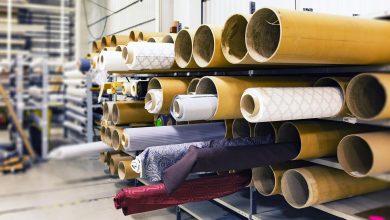
The digital revolution has transformed how businesses operate. Cloud-based software as a service (SaaS) solutions offer a convenient and scalable way to manage everything from marketing to sales. In fact, the average organisation now uses around 130 SaaS tools across its departments.
However, the convenience of these tools comes with a hidden cost: their environmental impact. The increasing reliance on digital solutions has led to a phenomenon known as software sprawl, where organisations grapple with an overwhelming number of applications. These tools are often used to do exactly the same thing as another, or are simply not used at all.
But how exactly could excess SaaS subscriptions be causing the planet harm and what can you do to mitigate the effects?
Software sprawl explained
Imagine a toolbox overflowing with tools, many of them duplicates or rarely used. This is software sprawl in a nutshell. According to SaaS management platform Vertice, software sprawl occurs when organisations accumulate an excessive number of SaaS applications, often due to uncoordinated purchasing decisions or a lack of oversight.
This can come as a result of natural business expansion, but also through decentralised software purchasing occurring within an organisation, usually at the will of individual employees. While this usually comes with good intentions, unmanaged growth leads to reduced productivity through workflow disruption, wasted spend on unused or underutilised tools, and an increased attack surface for security vulnerabilities.
Beyond this, while each application might seem insignificant on its own, the collective energy demands of these tools can have a significant environmental impact.
The environmental footprint of SaaS
SaaS applications rely on data centres, massive facilities housing servers and the infrastructure that powers them. As Nasdaq explains, in a typical data centre you expect to find servers, air conditioners, cables and other equipment that consume vast amounts of energy. This energy is often generated by fossil fuels, contributing to greenhouse gas emissions which are a key driver of climate change.
Furthermore, the development of software itself, especially AI-powered tools, can be energy-intensive. Training complex AI models requires powerful processors running for extended periods, further adding to the environmental burden.
How to mitigate the impact of your SaaS stack
Businesses can take several steps to reduce the environmental impact of their software choices:
- Gain full visibility of your SaaS and eliminate unnecessary subscriptions
A process known as software rationalisation offers a solution to the challenges posed by SaaS sprawl. It involves a comprehensive evaluation of each application within your SaaS stack, scrutinising factors such as its functionality, user base, and associated costs.
The identification and analysis of redundant, duplicate, or non-essential applications enables organisations to cancel or adjust the number of licences accordingly, helping to not only save on costs but also to help to trim the environmental toll of your tech stack.
- Invest in eco-friendly technology
While SaaS is inherently digital, it often requires physical hardware like monitors and computers to operate. This contributes to a hardware manufacturing demand, which itself significantly contributes to carbon emissions. Investing in energy-efficient devices like LED monitors and exploring alternative energy sources can contribute to a greener workplace. - Offset your carbon footprint
Despite best efforts, some degree of carbon footprint is unavoidable. For the areas of your trade where you simply can’t achieve complete elimination of carbon emissions, you could work to offset them. For instance, consider participating in carbon offsetting schemes offered by organisations like Greenly and Earthly. These initiatives invest in projects that remove carbon dioxide from the atmosphere, neutralising your emissions.
Software is a powerful tool for businesses, but its environmental impact shouldn’t be ignored. By taking steps to manage software sprawl and making conscious choices about the tools they use, businesses can contribute to a more sustainable future. Remember, a clean tech stack isn’t just good for the environment; it can also improve your organisation’s efficiency and security.



